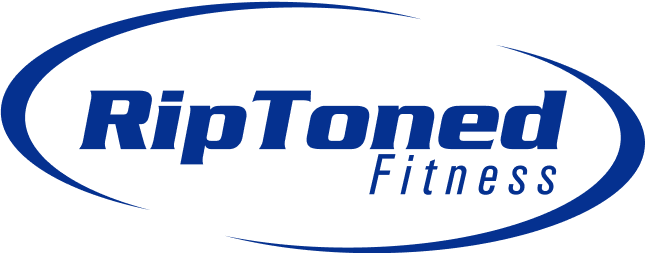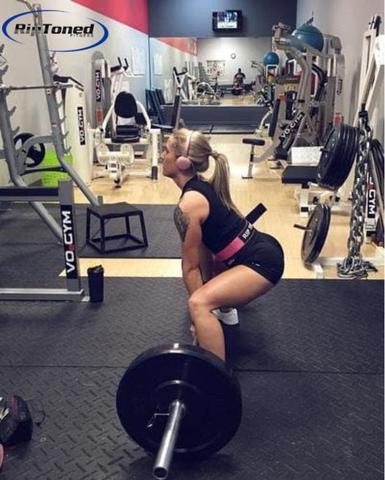WHY DO I NEED A LIFTING BELT?
A lifting belt is a supportive device worn around the waist during weight training. It is made to give the lower back more stability and support, making it less likely to get hurt or strained.
Wearing a lifting belt can also provide numerous benefits, such as improved posture and increased core strength.
The use of a lifting belt is sometimes a debated topic among weightlifters and fitness enthusiasts.
While many believe it is necessary to maximize performance and help prevent injury, others feel that it can inhibit natural body movements and lead to over-reliance on the belt.
However, research has shown that wearing a lifting belt can be beneficial when used correctly.
Whether you are a beginner or an advanced weightlifter, learning about the benefits and best practices for wearing a lifting belt can help you get the most out of your workout.
THREE REASONS WHY YOU SHOULD WEAR A LIFTING BELT
- Weightlifting Safety: A lifting belt can help to provide extra stability and support when lifting heavy weights, reducing the risk of injury. It can also help to improve your form and technique by providing a reference point to ensure proper alignment when performing exercises.
- Improved Posture: Wearing a lifting belt can help improve posture by providing extra-abdominal and lower back support. It can also help to create a more stable base, which can reduce strain on the spine and joints.
- Increased Core Strength: Wearing a lifting belt can help engage the core muscles and increase abdominal pressure, which can help stabilize the spine. This can help improve overall strength and power when lifting heavy weights.
WHEN SHOULD YOU START USING A LIFTING BELT?
Using a lifting belt when weight training can be a great way to help lift heavier weights in a more safe and efficient manner.
Anyone, whether a beginner-level lifter just starting to develop their core muscles or those involved in serious weight training, can start wearing a lifting belt. A lifter should definitely be using a lifting belt once they can lift twice their body weight in major lifts like squats and deadlifts, as this is where the extra support can make the most difference.
In addition to helping with proper form, the right weightlifting belt can also drastically reduce your chances of injury due to incorrect posture or technique while you work out.
HOW TO CHOSE THE RIGHT LIFTING BELT
When it comes to lifting belts, there are a lot of options available on the market, and it can be hard to know which one is right for you.
Not all lifting belts are created equal. With so many different types, materials, and sizes available, how do you know which belt is right for your body and your workout?
Follow these simple guidelines to choose the perfect lifting belt for you.
Measurement and Fit: Lifting belts are an essential tool for serious weightlifters to help keep them safe and allow them to try heavier weights. But choosing the right size and fit is extremely important, as it can impact your lifting performance as well as your health.
To guarantee a proper measurement and fit, it is important that you first measure the circumference of your core going across your navel, then use this data with a size chart to find the best belt for you.
The belt should be snug but not too tight or too loose; if you experience discomfort at any time, go up one size for more comfort. Taking the time to properly measure the circumference of your core and choose the correct belt will improve your safety and elevate your performance levels right away!
Support and Comfort: When looking for the best lifting belt, you should put comfort first.
Not only does comfort help keep you on track with your set goals, but it also allows for a better range of motion.
A few warm-up squats at various angles can help you determine whether your belt is up to the task. Some belts that are too tight will restrict movement and leave you feeling uncomfortable, while too loose of a belt will provide little support during key compound lifts.
Make sure to try the belt on with whatever workout clothing you may be wearing so that you know if it is going to fit properly and provide the necessary support without cutting off blood circulation or creating an unnecessary sense of tightness.
Quality and Durability: Investing in a quality belt is an important decision to make, and there are many factors to consider.
How long the belt lasts will depend on the materials that were used to make it. Choosing belts with reinforced stitching and designed for heavy-duty use will help ensure that the belt lasts for many years.
BEST PRACTICES FOR WEARING A LIFTING BELT
When it comes to strength training, the use of a lifting belt can help you achieve higher levels of success than working out without one.
There are a few best practices to follow when wearing a lifting belt to get the most out of it.
An important one is to make sure you're wearing the belt properly. For the best fit, adjust the buckle and loop the belt through itself to tighten it around your core.
Also, if you want to get the most out of your workout in terms of strength, make sure your breathing is in sync with your lifts. Take a deep breath when pulling or pressing, then let it out when you're done. This will help you get the right intra-abdominal pressure, which can help support and stabilize your core.
You should always wear a lifting belt when you work out, and following these best practices will definitely help you lift well and stay safe in the gym.
ONE MOST IMPORTANT THING TO KNOW ABOUT LIFTING BELTS
Lifting belts are an important piece of equipment for lifting weights and doing resistance training, but not everyone knows how to use them properly.
Generally, lifting belts should be worn around the midsection, just above the hips and below the rib cage. When lifting, it is important to take deep breaths while lifting and use your core muscles to apply power.
Belts are a good way to help you lift things the right way because they provide extra support and stability. They help keep you from putting too much strain on your spine when you lift weights or do other exercises that build muscle. If you use lifting belts correctly, you can improve your form, strength, and overall workout performance.
Pro Tips you need to know about wearing a lifting belt
Working toward exercise goals often means incorporating strength training into a routine. Lifting belts are an important piece of exercise equipment for those who visit the gym for this purpose. Belts provide support for the exercise and can help finish stronger lifts. Placing a belt around one's waist tightens the trunk muscles and helps stabilize them, particularly during heavy lifting.
This extra stability lets people work out with heavier weights and improve their form by keeping their shoulders over or in front of their hips while keeping their core engaged and their belly button tucked in.
By taking advantage of these pro tips, gym goers can better reach their strength goals and have peace of mind knowing that they are doing so safely.
THE BEST LIFTING BELT FOR YOU
When weightlifting, a lifting belt can be an important piece of equipment to use. Not only can it make certain exercises safer and easier, but it can also help you stand up straighter and make your core muscles stronger. Additionally, it supports the lower back and helps protect it against injury.
When choosing a belt, think about how well it fits, how well it supports, how comfortable it is, and how long it will last. Make sure you understand how to tighten and put on the belt for optimal protection and support. By following these tips when wearing a lifting belt, weightlifters are able to take full advantage of all the benefits.
Click here to check out Rip Toned’s lifting belts
Related Topics
4 Tips to Prevent Training Injuries
Common Lifting Injuries (And How to Avoid Them)
4 Tips to Improve Lifting Gains The Right Way

